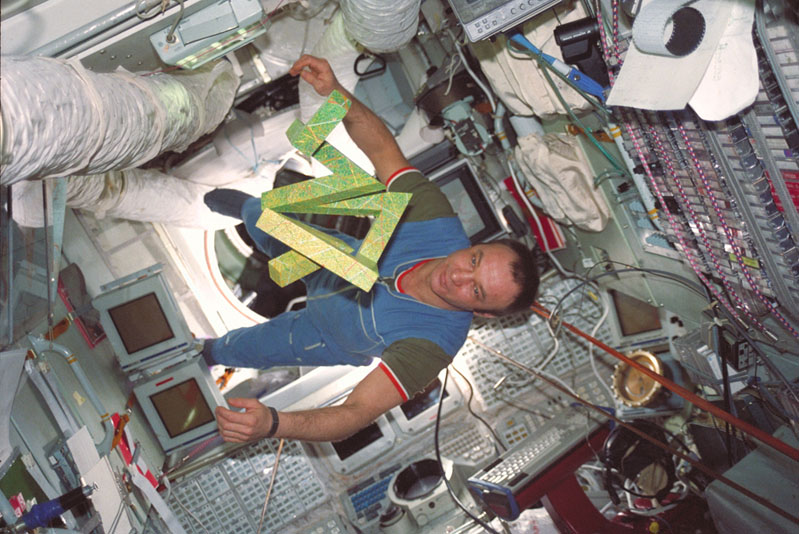Week Nine - Space and Art
Week 9 - Space and Art
As the science fiction genre dominates the current media landscape with franchises like Star Wars and Guardians of the Galaxy (among many others), it seems only fitting that this course conclude with the intersection of space and art. Following the trend of the course, artists both inspire and get inspired by the field of space exploration.
In the early years of space exploration, goals and innovations were largely shaped by the musings of science fiction novelists. Arthur C. Clarke’s novel, The Fountains of Paradise, details the construction of a space elevator. While the novel could not have
accurately predicted the real-life logistics of such a project, it’s idea was a catalyst for scientists around the world to attempt making the idea a reality. According to a report from the International Academy of Astronautics published in 2013, a space elevator is not only possible, but could be up and running within the next few decades. The report from the IAA details the potential for mining extraterrestrial resources, shipping packages and people into space, and greatly reducing the cost of travel outside of Earth’s atmosphere. It is unclear whether Clarke’s novel was the primary inspiration for the project, but much of the project’s benefits and consequences parallel the narrative.
On the opposite end of things, art is learning and growing from the continued study of space rather than being the cause of its advancement. Dancing on the Ceiling: Art and Zero Gravity is an exhibition that compiles the work of multiple artists to explore the physical experience of weightlessness as well as the emotional connotations of the feelings of gravity and weightlessness. Cosmic Dancer takes a different approach. True to the spirit of modern art, Cosmic Dancer attempts to reevaluate the conventions of sculpture through a weightless environment. Both Dancing on the Ceiling and Cosmic Dancer use an environment key to space exploration to further the understanding of experiences and objects here on Earth.
BIBLOGRAPHY
Clarke, Arthur C. The Fountains of Paradise. London: Royal National Institute of the Blind, 2002. Print.
Forde, Kathleen. "Dancing on the Ceiling: Art & Zero Gravity." Dancing on the Ceiling: Art & Zero Gravity. Curtis R. Priem EMPAC, n.d. Web. 04 June 2017.
Swan, Peter Alfred, David I. Raitt, Cathy W. Swan, Robert E. Penny, and John M. Knapman. Space Elevators: An Assessment of the Technological Feasibility and the Way Forward. Paris: International Academy of Astronautics, 2013. Print.
Templeton, Graham. "60,000 Miles Up: Space Elevator Projected for 2035." ExtremeTech. ExtremeTech, 20 Nov. 2014. Web. 04 June 2017.
Woods, Arthur. "Photos of Cosmic Dancer." Cosmic Dancer Photos: Mir Space Station. Mir Space Station, n.d. Web. 04 June 2017.
 |
| Gennadi Manakov and Cosmic Dancer (Photo Courtesy of Cosmic Dancer website, Arthur Wood) |
As the science fiction genre dominates the current media landscape with franchises like Star Wars and Guardians of the Galaxy (among many others), it seems only fitting that this course conclude with the intersection of space and art. Following the trend of the course, artists both inspire and get inspired by the field of space exploration.
In the early years of space exploration, goals and innovations were largely shaped by the musings of science fiction novelists. Arthur C. Clarke’s novel, The Fountains of Paradise, details the construction of a space elevator. While the novel could not have
 |
| Ground Control, Edith Dekyndt, 2008. (Photo Courtesy of Dancing on the Ceiling: Art and Zero Gravity, Parker's Box Gallery) |
 |
| Stasi City, Jane and Louise Wilson, 1997. (Photo Courtesy of Dancing on the Ceiling: Art and Zero Gravity, Jane Wilson) |
On the opposite end of things, art is learning and growing from the continued study of space rather than being the cause of its advancement. Dancing on the Ceiling: Art and Zero Gravity is an exhibition that compiles the work of multiple artists to explore the physical experience of weightlessness as well as the emotional connotations of the feelings of gravity and weightlessness. Cosmic Dancer takes a different approach. True to the spirit of modern art, Cosmic Dancer attempts to reevaluate the conventions of sculpture through a weightless environment. Both Dancing on the Ceiling and Cosmic Dancer use an environment key to space exploration to further the understanding of experiences and objects here on Earth.
BIBLOGRAPHY
Clarke, Arthur C. The Fountains of Paradise. London: Royal National Institute of the Blind, 2002. Print.
Forde, Kathleen. "Dancing on the Ceiling: Art & Zero Gravity." Dancing on the Ceiling: Art & Zero Gravity. Curtis R. Priem EMPAC, n.d. Web. 04 June 2017.
Swan, Peter Alfred, David I. Raitt, Cathy W. Swan, Robert E. Penny, and John M. Knapman. Space Elevators: An Assessment of the Technological Feasibility and the Way Forward. Paris: International Academy of Astronautics, 2013. Print.
Templeton, Graham. "60,000 Miles Up: Space Elevator Projected for 2035." ExtremeTech. ExtremeTech, 20 Nov. 2014. Web. 04 June 2017.
Woods, Arthur. "Photos of Cosmic Dancer." Cosmic Dancer Photos: Mir Space Station. Mir Space Station, n.d. Web. 04 June 2017.
Comments
Post a Comment